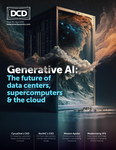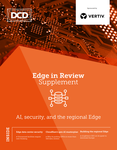Big Tech corporations are always looking for the next big thing – the AI space is just the latest example. Yet, it's understandable that OpenAI is being cautious when commencing development of the latest version of its flagship large language model, GPT-5.
With the release of GPT-4 occurring in March, there's still a whole generation of tools, applications, and platforms that can be created from variations of this brand-new model.
We must refine models like GPT-4 to ensure cost-effectiveness, accuracy in language generation, and factual validation, rather than always looking to the horizon for something bigger.
With that in mind, it’s a smart strategic decision for OpenAI to focus on developing and optimizing GPT-4 to its fullest extent. The development of LLMs requires a significant amount of research, resources, and time.
Even then, these models that are trained on larger, often unvetted datasets are haunted by issues with factual validation and hallucinatory content. So, there is greater promise in focusing on smarter models trained on high-quality datasets that provide greater value to their designated fields.
The way forward could be different
Even though huge corporations already possess mountains of training data with which they can build sprawling, complex AI models, bigger doesn't always equal better. Instead, organizations may find it more valuable to take a different path and create smarter domain-specific models which have greater practical use.
By limiting the number of parameters and focusing on a specific use case, these models can achieve better performance and faster, more cost-effective training times.
Additionally, these models may be more reliable and less prone to errors in real-world applications because they are trained on data that closely matches the problem they are meant to solve. With data-centric engineering, we can focus on making sure that we have the right data to train models, rather than designing a model and then looking around for scarce datasets to train it. The enhanced precision of answers granted by this process can fuel models suited for business-critical processes, or other factual accuracy-focused tasks like scientific research.
Unlike the one-size-fits-all large language model (LLM) approach, typically trained on large datasets of varying quality, smart language models put accuracy first. Whilst LLMs can produce impressive results, they may not always be the best choice for a specific use case.
Model optimization is a critical part of AI’s future: especially when combined with the open-source movement. By producing and refining practical models which cost significantly less to train, this presents a better way forward for all, rather than always going in search of the next few billion parameters.
So, what does AI's future look like?
Instead of focusing on the next big thing, fine-tuning the already capable models created by players like Meta will usher in the next era of this generational technology.
By fine-tuning existing language models for specific uses, we can leverage the vast amounts of data that businesses are collecting and ensure that their models are more accurate, reliable, and trustworthy. This approach can also help reduce the time and resources required to develop new AI models, making the technology more accessible and cost-effective.
AI is rapidly evolving and, with enterprises and researchers looking to implement it into their day-to-day processes, we must focus on fine-tuning existing models to make them usable by companies without billions of dollars to spare. By doing so, we can promote accuracy and factual validation, creating models that require less time and resources to develop – thus making the technology more accessible and cost-effective to all.





